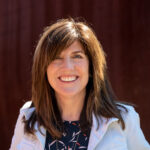Podcast: Play in new window | Download
Subscribe: Spotify | Email | RSS
The 5 Languages of Appreciation in the Workplace with Dr. Paul White
Hi, everyone. It’s Jenn DeWall, and on this week’s episode of the Leadership Habit Podcast by Crestcom, I sat down with Dr. Paul White to talk about how you can show more meaningful appreciation at work.
Dr. Paul White is a psychologist who makes work relationships work. He has been published by BBC News, Business Week, CNN, Fortune, Entrepreneur, and the New York Times, and he has spoken in North America, Europe, South America, Asia, and the Caribbean. Numerous multinational organizations– including PepsiCo, Microsoft, and NASA – have sought his expertise.
Dr. White is the co-author of the bestseller, The Five Languages of Appreciation in the Workplace, selling over 550,000 copies, and has been translated into over 25 languages. If you want to know how to improve employee engagement by providing more meaningful appreciation at work, this podcast is for you. Enjoy!
Episode Summary Below
As the episode opens, host Jenn DeWall welcomes Dr. Paul White to the podcast. He introduces himself to the audience and shares his work and life experiences that lead him to write his bestselling book, The Five Languages of Appreciation in the Workplace.
Dr. White is a trained psychologist who grew up outside Kansas City. He grew up within a family-owned business. Later, he had friends who were business consultants that requested his help with common issues that popped up with their clients who were in family-run businesses.
He then spent about 15 years traveling the country, working with family-owned businesses and helping them deal with their family issues that intersected with their business issues. This included things like business succession planning, passing the business on to the next generation, and treating everyone fairly.
Around the same time, he was reading Dr. Gary Chapman’s book, The 5 Love Languages. He began to see ways that the advice in that book could apply to working relationships in addition to romantic relationships. This inspired him to connect with Dr. Chapman and propose they collaborate on what would eventually become The Five Languages of Appreciation in the Workplace, which went on to sell 550,000 copies in 25 languages.
Gary Chapman and Paul White also developed The Motivating by Appreciation Inventory assessment, which has been taken by more than 375,000 people around the world.
Common Misconceptions about Appreciation in the Workplace
Then, Dr. White explains the four major misconceptions leaders have about employee appreciation.
Misconception # 1: Employee Recognition is the same as appreciation.
Employee recognition is usually formal, automated and impersonal. Appreciation should be authentic, meaningful and personalized.
Misconception # 2: Appreciation is just words.
While saying thank you and giving compliments can be effective, less than half of employees would choose words as their primary language of appreciation.
Misconception # 3: Appreciation is just about being nice and making people feel good.
Appreciation is actually fundamental to having a functioning business. It reduces turnover and absenteeism and increases employee engagement and customer satisfaction.
Misconception # 4: Appreciation is just for managers and executives.
While managers and executives should set an example, it is important for team members to communicate appreciation for one another as well.
The Power of Appreciation
Then, Jenn and Dr. White discuss the power of appreciation to create a positive work environment. Dr. White explains that appreciation can be more powerful than increased compensation. He cites an MIT study that found that when employees feel unappreciated, they are more likely to quit than an employee who is dissatisfied with their compensation.
Dr. White also mentions a study that found that 79% of people that quit voluntarily cite a lack of appreciation as the key reason they are leaving. So, leaders who embed authentic appreciation into the company culture will see improved performance and less turnover.
What are the 5 Languages of Appreciation in the Workplace?
Next, Dr. White explains the five languages of appreciation. They are the same as the five love languages created by Dr. Chapman, just expressed a little differently:
- Affirmation – 46% of all employees choose words of affirmation as their primary language. Dr. White explains this goes beyond saying “Good Job” and must be specific, timely and genuine expressions of appreciation.
- Quality Time – 35% of younger workers prefer quality time, whereas only about 20% of older employees are seeking quality time. Quality time can mean giving employees your undivided attention in a one-on-one setting. Or, it can be opportunities for colleagues to connect outside of the work environment.
- Acts of Service – This can be as simple as lending a hand when needed. Team members can show appreciation by pitching in during busy times or offering help with a difficult task.
- Tangible Gifts – Only 7% of the population prefers receiving gifts as their primary language. For gifts to be effective, they should be unexpected and tailored to the employee’s personal tastes.
- Physical Touch – Less than 1% of employees state this is their preferred language. Dr. White explains that in the workplace, physical touch can be a simple high-five at the right time or a congratulatory pat on the back. He notes that different cultures will find different levels of touch appropriate, and leaders should be aware of those differences.
Where to Find More from Dr. Paul White
- Visit his website at appreciationatwork.com
- Purchase his book, The Five Languages of Appreciation in the Workplace, where you will also receive a code to take the introductory assessment to learn your primary language!
- Email him at yesdrpaul@gmail.com, and he will send you a sample report of his online assessment, the Motivating by Appreciation Inventory and a copy of an article about his work on the New York Times.





